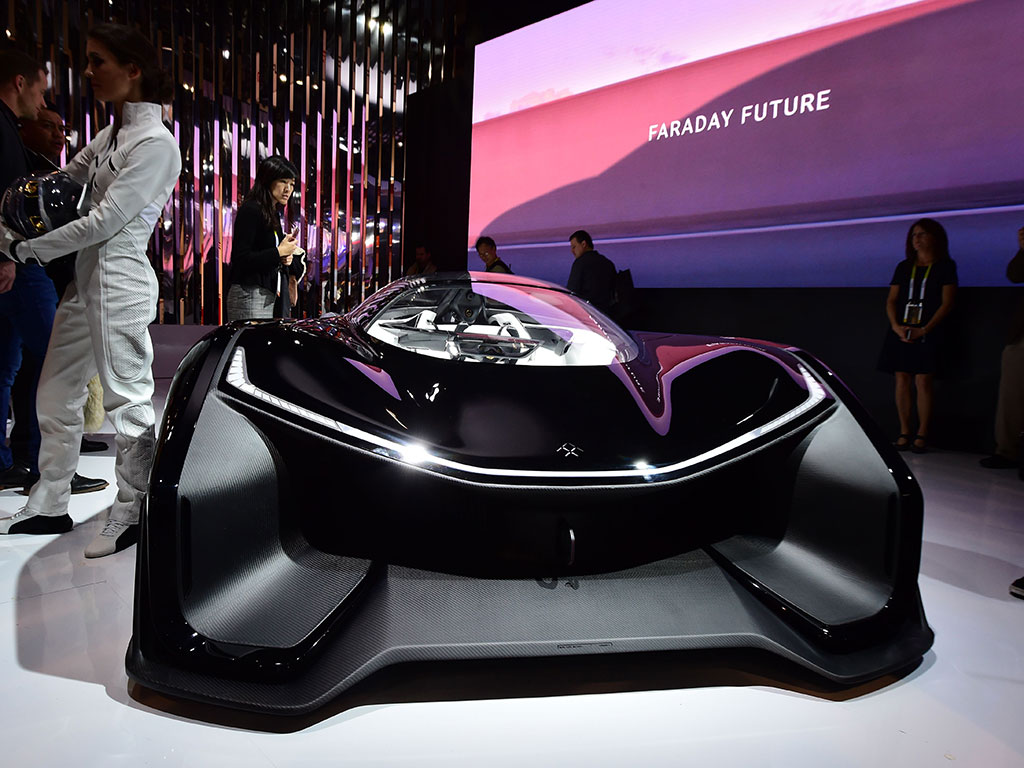Self-driving cars will divide the world
The technology industry is making it clear that, in future, you won’t have to drive a car if you don’t want to

The araday Future FFZERO1 self-driving concept car on at the 2016 Consumer Electronics Show (CES) in Las Vegas. The autonomous cars on display at CES (largely built by technology firms) were in stark contrast to the more traditional, retro-styled non-autonomous cars on display at the North American International Auto Show in Detroit a week later
The standout models at the North American International Auto Show in Detroit this year were retro, bold and big: even more so than you would usually expect. The sleek 2017 Ford GT impressed, while the Lincoln Continental and the Buick Avista concept emphasised luxury, with gleaming front grilles and finely finished interiors.
But a very different style of car had been on display at the Consumer Electronics Show in Las Vegas a week earlier. The Volkswagen Budd-e Microbus was a boxy, chunky people-mover driven by an electric motor on each axel; with its battery under the floor, the car was shaped to maximise cabin size. Less practical but far faster was the Faraday Future FFZERO1, a concept from a firm looking to popularise the electric car. “We want to be a technology company rather than an automotive company”, Faraday Senior Vice-President Nick Sampson told his audience as the machine was unveiled.
Motoring apathy
The automotive industry is at its biggest turning point since its inception, as physically driving a car goes from a necessity to a choice. In an interview with the Design Council, Marek Reichman, Chief Creative Officer of Aston Martin, said autonomous driving is now just a matter of time. General Motors clearly agrees, as it recently invested $500m in ridesharing app Lyft, another company working on self-driving cars. But this is a demographic change as much as it is a technology one.
Autonomous driving is now just a matter of time
The number of people who don’t care about driving is increasing. A 2013 survey by the University of Michigan’s Transport Research Institute found 15.3 percent of the US population between the ages of 18 and 39 don’t have a driver’s licence. While still a minority, this number is only increasing and not limited to the US; similar findings are coming from Australia, the UK and Germany. With fewer people able to afford or be bothered to maintain a car, design is going in two distinct directions.
On show in Detroit were cars targeted at the drivers who will refuse to let go of the steering wheel: these cars were reminiscent of classic designs, perhaps reminding people of the cars that got them interested in driving in the first place. The earliest example of a driverless car design from Google could not have been more different: looking more like a computer accessory, it appeared to be an attempt to appeal to people by looking as little like a car as possible.
Choosing to drive
The privately owned and human operated car will still be around for the time being, but the line between cars and technology is getting blurrier. The recent launches of Android Auto and Apple CarPlay marked a gradual shift towards a connected car more dependent on software, and a technology industry as much interested in moving people as keeping them entertained. During The Wall Street Journal’s WSJDLive conference in October, Apple CEO Tim Cook said:”When I look at the automobile, what I see is that software becomes an increasingly important part of the car of the future. You see that autonomous driving becomes much more important.”
With so many human-controlled cars on the roads, it’s difficult to imagine them disappearing quickly. Cars will always be there for people who enjoy, and can still afford, to drive themselves. But when buying a new car in 10 years time, you may have to decide if you can be bothered; choosing to drive a car is feeling more retro by the day.













